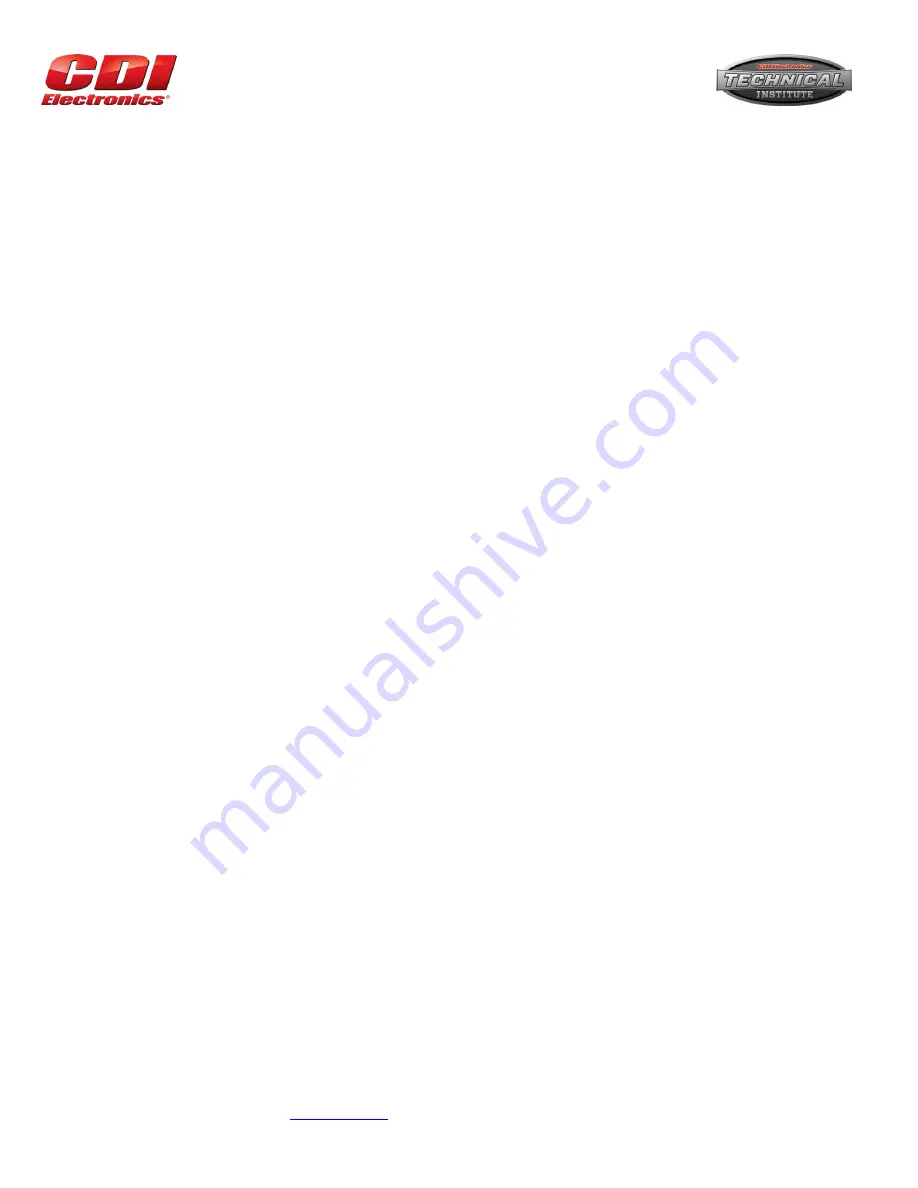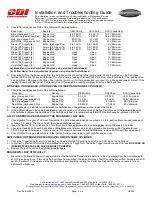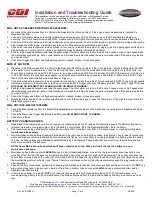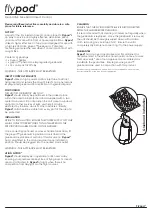
Installation and Troubleshooting Guide
This installation is to be completed by an Authorized Dealer or Professional Service
Technician. For questions regarding installation or warranty, call CDI Tech Support
at 866-423-4832. Do not return to the Dealer or Distributor where the part was purchased.
Contact CDI Electronics Directly for Return Material Authorization.
CDI Electronics, LLC
•
353 James Record Road SW
•
Huntsville, AL 35824 USA
Web Support: www.
•
Tech Support: 1-866-423-4832
•
Order Parts: 1-800-467-3371
All rights reserved. Reproduction or use of content, in any manner, without express written permission by CDI Electronics, LLC., is prohibited.
Rev E
•
4/30/2021 Page - 1 of 4 QF-358
CDI P/N: 174-5456
This stator replaces the following P/N's: 398-5454A2, A6, A7, A8, A9, A17, A18, and A55.
Warning! This product is designed for installation by a professional marine mechanic. CDI cannot be held liable for injury or
damage resulting from improper installation, abuse, neglect, or misuse of this product.
It is recommended that dielectric grease (i.e. CDI 991-9705) be used in the bullet nose connectors to help prevent corrosion.
Any sign of leakage out of the high voltage coils or bubbling around the battery charge windings indicate a bad Stator. Check for burn marks
on each pole. If a problem is found on the battery windings, we recommend the Rectifier be closely checked. To replace Stators with ring
terminals, use the bullet to ring adapters enclosed with this Stator.
INSTALLATION
1. Disconnect the negative battery cable.
2. Disconnect the Stator wires from the Switchbox, engine ground, and the Regulator/Rectifier.
3. Remove the flywheel.
4. Mark the position of the mounting screws in relation to where the Stator wires come out of the old Stator.
5. Remove the old Stator.
6. Orient and install the new Stator in the same position as the old Stator on the engine and install the flywheel, following the service
manual instructions.
7. Connect the Yellow Stator leads to the Regulator/Rectifier.
8. Connect the Stator Black wire to engine ground.
9. Connect the Red and Blue wire to one Switchbox and connect the Red/White and Blue/White wires to the other Switchbox.
10. Replace the flywheel according to the service manual.
11. Connect the negative battery cable.
TROUBLESHOOTING
How to test the Engine Stop Circuit (Kill) for DC Voltage:
1. DC voltage present on the kill circuit of the Switchboxes due to a faulty key switch, boat harness, or engine harness will severely
damage the Switchboxes internal kill circuit
.
Connect a Digital Multi Meter to the Ignition Stop wire(s) AT THE SWITCHBOXES while
disconnected from the Switchboxes in reference to a known good engine ground. Turn the Ignition switch on and off several times. If, at
any time, you see over 2 VDC on the kill wire(s), there is a problem with one or both harnesses and/or the Ignition switch. The Ignition
Stop wire should not be connected back to the new Switchboxes at any point until the problem is corrected
OR DAMAGE TO THE
SWITCHBOXES WILL OCCUR
!
NO FIRE ON ANY CYLINDER:
1. Disconnect the Black/Yellow (or Orange) stop wires AT THE SWITCHBOXES and retest. If the engine’s Ignition now has spark, the
stop circuit has a fault. Check the key switch, harness, and shift switch (if present).
2. Disconnect the Yellow wires from the Stator to the Regulator/Rectifier and retest. If the engine has spark, replace the
Regulator/Rectifier.
3. Check the cranking RPM. A low cranking speed may not allow the system to spark properly. This can be caused by a weak battery,
dragging starter, bad battery cables, or a mechanical problem inside the engine.
4. Inspect and clean all engine and Ignition ground connections.
NO SPARK OR INTERMITTENT SPARK ON ONE OR MORE CYLINDERS:
1. If two cylinders on separate Switchboxes are not firing, check the Trigger as described in step 3 below. The Trigger has three pickup
coils to Trigger six cylinders. #1 and #4, #2 and #5, #3 and #6 each share a Trigger coil.
2. Connect a spark gap tester and verify which cylinders are misfiring. If the cylinders are only misfiring above an idle, connect an
inductive Tachometer to all cylinders and try to isolate the problem cylinders.






















